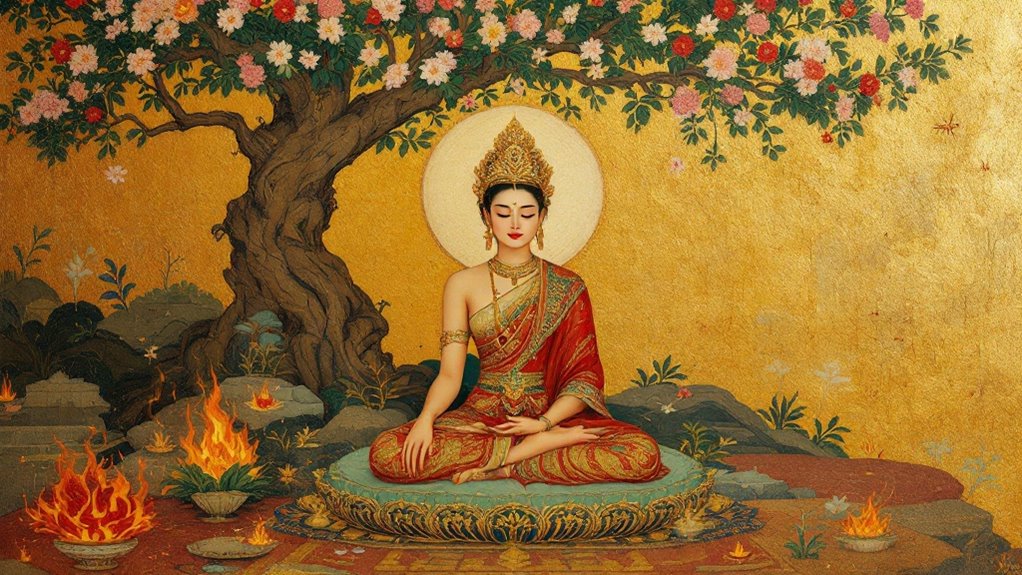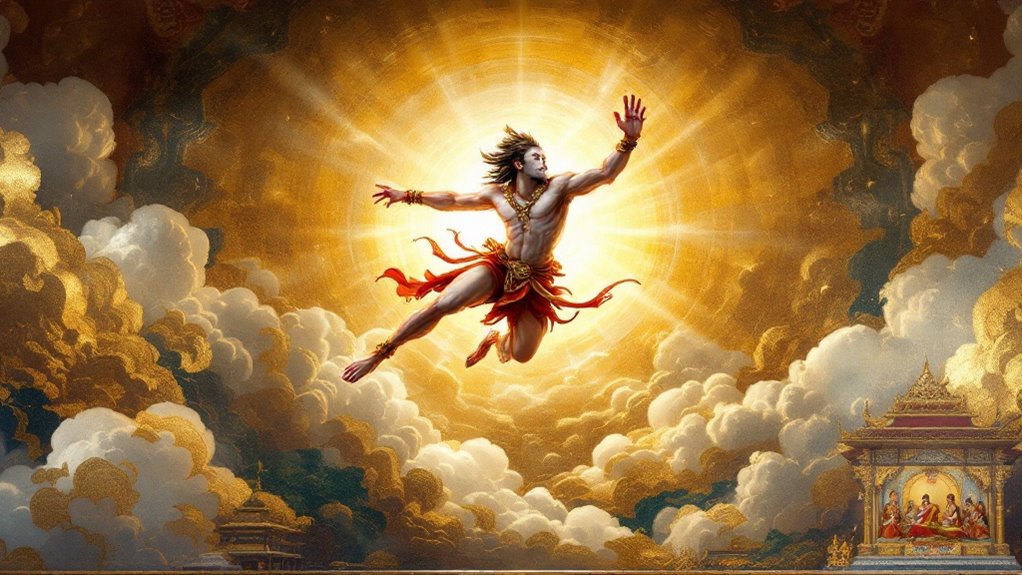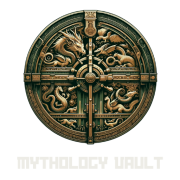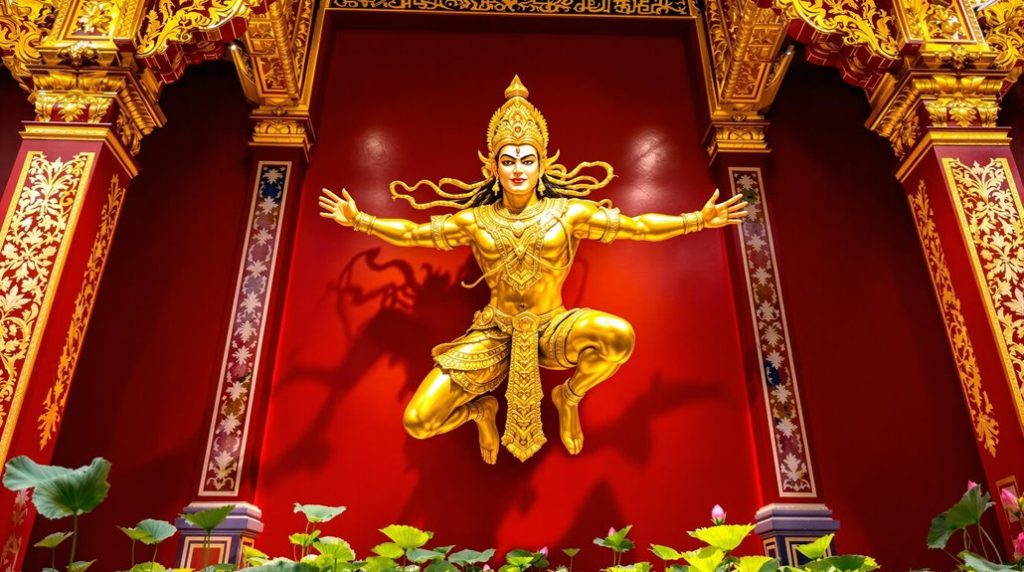The heroes from Thailand's ancient Ramakien epic have always spoken to me on a profound level. Beyond being characters in an old story, Rama, Hanuman, and Sida feel like reflections of our shared human struggles and moral hopes. Their tales are woven with universal ideas of duty, love, and goodness that still ring true today.
What I find most fascinating is how these larger-than-life figures provide a bridge between lofty spiritual concepts and the everyday ethical choices we face. Through both their victories and hardships, their legends offer us guidance. I'd like to reflect on how their timeless examples can shed light on our own paths and challenges.
The Legacy of Rama's Leadership
Rama's legacy spans two distinct narratives – the mythological Rama and the historical Rama I of Siam. Both figures embody the archetype of the righteous warrior-king who fights for justice.
In myth, Rama's victory over Ravana represents the eternal struggle between good and evil. However, this same spirit is reflected in Rama I's real-world achievements – establishing Bangkok, defending against invaders, and sparking a cultural renaissance. Through the Thai Ramakien, these parallel stories merge, creating a powerful blueprint for leadership that combines moral strength and practical action. His triumph in the Burmese-Siamese War demonstrated this warrior-king ideal in practice.
Their shared legacy highlights that true leadership transcends time, uniting ethical governance with the courage to defend one's people and values.
Hanuman's Devotion and Moral Strength
Among the most revered figures in Thai mythology, Hanuman stands as a paragon of devotion and moral strength, embodying three essential virtues – unwavering loyalty, spiritual dedication, and compassionate wisdom.
His legendary leap to Lanka transcends mere physical prowess—it's a tribute to the boundless power of faith when aligned with noble purpose. Hanuman's actions teach us that true strength flows from the marriage of physical capability and spiritual conviction. In Thai culture, warriors and protectors draw inspiration from his example, wearing his amulets as reminders that courage must be tempered with wisdom.
What makes Hanuman's story timeless is how he wields immense power yet remains humble. His journey shows us that genuine strength lies in serving something greater than ourselves. Depicted in traditional Thai temples, Hanuman's images serve as powerful guardians of sacred spaces, reflecting his eternal role as a protector of virtue.
Nang Sida's Unwavering Moral Character

Three defining virtues mark Nang Sida's unwavering moral character: her unshakeable fidelity, her resilient spirit in the face of adversity, and her divine connection as Lakshmi's incarnation. I'm struck by how she transforms personal trials into universal testimonies of truth and justice. When falsely accused, she doesn't merely defend herself – she invokes divine intervention through the trial by fire. Her story embodies the concepts of karma and demonstrates how righteous actions ultimately prevail.
- Endures captivity by Tosakanth without compromising her principles
- Faces exile with dignity, refusing to return until properly vindicated
- Protects her sons while maintaining her moral stance
- Emerges victorious from the trial by fire, proving her purity
- Inspires generations through her embodiment of virtue and strength
Her story isn't just about personal vindication – it's about the triumph of moral integrity over deception and the power of unwavering faith.
Karma's Role in Ethical Choices
By examining the heroes of Thailand's timeless Ramayana, it becomes clear that karma plays a pivotal role in shaping the consequences of our ethical choices. Much like the divine threads that guided Phra Ram on his journey, our actions weave an intricate web that connects us to our ultimate destiny. The epic's protagonists illustrate how virtuous deeds create patterns of merit that ripple through time, influencing not just our present path but also our future incarnations. Through the lens of karma, the Thai Ramayana reveals universal truths about the weight of moral decision-making, where each choice carries significance in the eternal balance between dharma and adharma.
Actions Shape Future Destiny
Through karmic law, every choice we make shapes the future. I'm reminded that our actions aren't just momentary but powerful forces shaping our path. Like the heroes of the Thai Ramayana, we're bound by the principle that our deeds carry weight beyond the present.
- Your intentions impact the karma of every action
- Small choices can create transformations
- You alone are responsible for your karma
- Spiritual practice can purify karma
- Your reality reflects past choices, but doesn't define your future
Karma isn't rigid punishment and reward, but a natural law of cause and effect. It offers you the freedom to shape your destiny through ethical choices, like legendary heroes whose decisions shaped their journeys.
Good Deeds Bring Rewards
Good deeds bring rewards according to the Thai Ramakien epic. The story demonstrates that ethical conduct creates ripples of positive outcomes. For instance, Nang Sida's loyalty to Phra Ram leads to her ultimate vindication and reunion with him.
What I find fascinating is how the Ramakien shows the rewards of righteousness through the characters' actions. Hanuman's devotion to Phra Ram transforms into supernatural strength and divine blessings. These examples illustrate that the epic is not just suggesting that good deeds bring rewards – they actively shape our destiny and contribute to universal harmony.
Consequences Guide Moral Choices
In the Thai Ramakien, karma serves as a powerful force shaping moral choices by building upon the rewards of righteous actions. I've observed that karma isn't fate – it's a dynamic force you can control through ethical decisions. When you understand that every choice creates ripples of consequence, you'll see how karma guides heroes toward enlightened paths.
Each action shapes your karmic destiny. Positive habits create beneficial karmic loops. In the Ramakien, dharma (righteousness) aligns with positive karma. The heroes exemplify the power of ethical choices, demonstrating how your present actions determine future outcomes.
Like the heroes of the Ramakien, you're empowered to craft your destiny through conscious choices. It's not about accumulating good deeds like currency – it's about understanding the natural flow of cause and effect. By aligning with dharma, you're participating in the cosmic dance of moral consequence.
Teaching Values Through Epic Tales

In the epic tales of the Ramakien and Ramayana, heroes embody the timeless values that shape moral character. Through characters like Phra Ram and Hanuman, these stories serve as powerful teachers of virtue, bravery, and righteousness.
Their legendary deeds guide us towards moral excellence. When you explore their journeys, you'll find universal lessons about loyalty, duty, and the eternal struggle between good and evil. These aren't just stories – they're frameworks for understanding life's complex ethical challenges.
The heroes' triumphs and struggles illuminate the path of dharma, showing us how to navigate our own moral choices. These epics continue to shape cultural identity while inspiring personal growth and ethical development through art, performance, and storytelling.
Modern Relevance of Ancient Heroes
I find that the ancient heroes of the Thai Ramayana still influence our moral path today. Characters like Phra Ram and Hanuman embody timeless virtues that we still strive for, like loyalty, courage, and righteousness. Their epic struggles and triumphs offer us guidance for navigating modern ethical dilemmas in our personal lives and careers. Just as these heroes faced supernatural challenges with unwavering principles, we can draw strength from their examples to uphold values like devotion and integrity in today's world.
Heroes Guide Daily Ethics
<response Hồng awkward…"
Ancient heroes from the Thai Ramayana teach me valuable lessons about ethics in the modern world. Their stories provide practical guidance when I face difficult decisions. Through their examples, I've learned how to handle complex situations while staying true to what I believe in.
- Phra Ram's unwavering commitment to doing what's right shows me how to stay honest in tough times.
- Hanuman's loyalty reminds me to stand by good causes and people I care about.
- The battle between good and evil is like the moral challenges we face every day.
- The law of karma teaches me to think carefully about the consequences of my actions.
- How the characters work together demonstrates the strength of teamwork based on ethics.
I'm always struck by how the moral teachings of these ancient heroes apply perfectly to contemporary situations. They help me make better choices while honoring my cultural roots.
Ancient Values Still Matter
While we may think of ancient heroes as distant figures, the values they embody continue to guide our modern lives. Through Thailand's cultural perspective, the Ramayana's heroes, especially Lord Rama, offer wisdom that resonates with our deepest desires for freedom and meaningful purpose. The epic's focus on leadership and ethical conduct feels as relevant now as it was in the past – it's a living guide that helps us navigate today's complex moral issues.
When I reflect on Lord Rama's qualities, I see a model for genuine leadership that stands the test of time: courage combined with compassion, strength guided by wisdom. These aren't just idealized virtues; they're practical tools for personal growth. In an era where we often pursue fleeting success, the Ramayana reminds me that true fulfillment comes from living by eternal principles and serving a cause greater than ourselves.
Frequently Asked Questions
How Did Thai Artists Adapt Hindu Deities Into Their Own Cultural Context?
How did Thai artists adapt Hindu deities into their own cultural context? Well, they localized them by giving the deities Buddhist values and including regional spirits. They also made characters like Rama more relatable by showing flaws that resonate with Thai cultural sensibilities.
What Role Do Female Characters Besides Nang Sida Play in Ramakien?
I find female characters in Ramakien serve as powerful moral compasses. Nang Kaiyakesi's manipulation of Thotsarot shows how women shape destiny, while mothers like Kaosuriya and loyal wives like Kala Akhi drive key plot developments.
How Does the Thai Ramakien Differ From the Indian Ramayana?
The Thai Ramakien differs from the Indian Ramayana in several key ways:
- Portrayal of heroes: In the Ramakien, the heroes are depicted as more human-like, with flaws and weaknesses, compared to their more divine counterparts in the Ramayana.
- Unique Thai characters: The Ramakien includes characters and storylines that are unique to Thai culture, setting it apart from the Indian version.
- Incorporation of Buddhist values: Thai versions of the epic weave in Buddhist teachings and philosophies, such as the concept of karma, which are less prominent in the original Hindu text.
- Emphasis on karma: The Ramakien places a greater emphasis on the role of karma in the struggle between good and evil, showcasing how actions lead to consequences across lifetimes.
Were There Historical Thai Rulers Who Modeled Their Leadership After Rama?
Have you ever wondered what it would be like to rule as a wise, compassionate leader? That's exactly what several Thai kings, especially those from the Chakri Dynasty, did when they took the name "Rama" and based their reigns on qualities like justice, wisdom, and empathy.
How Has the Ramakien Influenced Modern Thai Entertainment and Popular Culture?
The Ramakien hasn't just shaped Thailand's past – it continues to influence our modern entertainment and culture. You can see the epic's timeless stories and characters woven into contemporary TV, movies, and theater.


